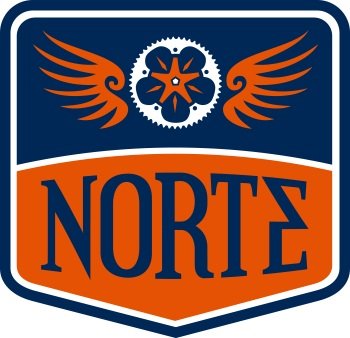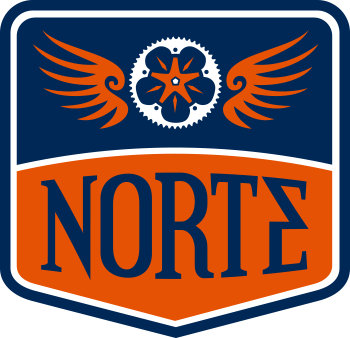TC Plans for Better Future
Traverse City’s City Planner, Shawn Winter, is undertaking two major planning pieces not even two years into the job. This fall, the city planning is rewriting the Master Plan and creating the first Mobility Action Plan. The first is a document to guide zoning, policies, and budgets to align with the community’s vision for the future. The latter is a comprehensive roadmap to improve walking, rolling, and transit options. Both plans produce recommendations for new policy changes, the engagement process, and the design of the built environment. They also need broad community input.
The effort is a monumental task that will impact the next decade of development and influence the design of the community far into the future. Recently Groundwork Center’s Carolyn Ulstad and Norte’s Gary Howe sat down with Winter to discuss the process and aspirations for the master plan and plan for non-motorized transportation.
Carolyn: What excites you the most about the city creating a new master plan?
Shawn: I’m excited to have an updated vision. The master planning process is when you start really focusing on the connections. Like how does land use affect transportation, how does that affect economic development, and what’s the impact on housing? So, you start having that broader interconnected conversation.
Another thing that excites me is that planning is an optimistic process. You’re thinking about how things are better in the future and how we can address needs and solve problems.
The other thing is the opportunity to talk about change. Change can be a trigger word and means different things to different people. Still, the reality is we need to have those uncomfortable conversations because change will happen. No community ever gets frozen in time. Change doesn’t have to mean a complete transformation where we lose our community’s identity. It can also focus on preservation; what don’t we want to change?
Gary: When comparing to past master plans, what do you see as a significant shift in vision from the community?
Shawn: I think our role in the region has amplified over at least the last ten years. With that, there’s a change in scale of the development happening here and just the overall community in general, it’s a favorable market, and things are happening fast. I think the pace of change is something that the community is probably going to talk a lot about.
I hear a lot about identity — the identity of this once small town in northern Michigan where there were no expressways and people mainly came to recreate outdoors. This place is now serving as a center of finance for the region, real estate is expanding, we’re starting to see some tech move in, and these different industry sectors as they’re evolving. They’re changing the dynamic of who’s here, what they can afford, their interests, and their needs.
There are diverse needs, and we need to talk about that a little more than we have in the past because if we can’t identify how we are diverse, how can we address the needs of everyone?
Carolyn: Will the Mobility Action Plan’s community involvement happen in tandem with the Master Plan, or will they be separate from each other?
Shawn: Overall, they will parallel each other. Before we even started the master plan process, we were aware of the fact that mobility is a specific area that needs more attention and a deeper dive so that it will be incorporated into the master plan as a subtopic.
When it comes to public outreach both consultant teams are working together because we’re trying to avoid engagement fatigue. We don’t want to have two surveys asking the same question twice. So, in September, we will release one survey incorporating both topics. In October, there will be a joint open house event. There will, however, be points where the plans separate because they’re diving into things that are a little different.
Gary: Could you introduce us to the consultants working on both plans? Why is it necessary to bring in outside help? And why did you choose them?
Shawn: Broadly, we hire consultants because of their expertise and capacity. We are very busy in the department, and they can move the process along faster and coordinate it with their staff. Also, there are just tools out there right now, resources, software, and analytics, that we don’t have in-house because it doesn’t economically make sense to buy them to use once every ten years. So, we hire them to bring their resources to create a better product than what we’d be able to do by ourselves.
For the master plan, we hired Beckett & Raeder, based out of Ann Arbor. However, they have offices here in Traverse City and Petoskey – full disclosure, I did work for them once. That’s a benefit because I have a trusted relationship with that staff and there is a high level of accountability since I know how the “sausage is made.” What we liked about them is that most of their staff working on this have local ties.
State Craft is the consultant working on community engagement, and their planner also lives in town. There’s that local knowledge which is very helpful, they understand the nuances of our community already.
We’ve hired Progressive AE and their sub-consultant, Toole Design Group, for the Mobility Action Plan. We’ve done a lot of work with them, their transportation engineer thinks like a planner, so there is a nice tie there that we don’t often see. Engineering and planning can be like oil and water at times, but they need to work together and they know how to make it happen.
They brought in Toole Design Group, which sold us. They’re a firm that’s been around for a couple of decades. They’re the national leader in micro-mobility and non-motorized transportation planning and design. So again, it’s a level of expertise we couldn’t have handled in-house.
Gary: We understand that these plans focus on the high level — policy and vision — but will there be specific design recommendations for specific locations?
Shawn: Yes and no. We talked about this at our leadership team meeting. The question is, do we want to be very specific or do we want it to say that for this type of intersection A, B, or C would be appropriate? There will probably be some specific projects that do come out of this and those would go into an action plan that looks out only five years.
Carolyn: Will community engagement look different than it did during the last plan update?
Shawn: One thing that hasn’t changed over the last ten years is that this community is very engaged. There’s an expectation to be engaged. When you have a project like this and do your community engagement, you’re holding a public event like an open house, advertising it, and inviting people to come. Well, most people don’t come to government functions unless they know what it is and have an interest. So, we’re flipping it a bit. Instead of having people come to us, we’re going to them with pop-up events all over the city. We’ll incorporate virtual components as well.
Carolyn: Because Traverse City is the hub for more than just city residents, how will the surrounding townships and counties be involved?
Shawn: We’re all Traverse City. To the average person, these geopolitical boundaries mean nothing. The consultant will be interviewing each of the communities around Traverse City because what they do impacts us and what we do impacts them.
To participate in either of the plans, please sign up at their project websites:
Carolyn Ulstad is Groundwork’s Transportation Program Manager with an extensive history of working on planning efforts with municipalities and state agencies. Gary Howe is Norte’s Advocacy and Communications Director. He served on the Traverse City’s Planning Commission and City Commissioner from 2013-2017. Ulstad and Howe co-facilitate with Amy Hertzog from Tart Trails, Norte’s Advocate Academy.
*This feature was originally published by Groundwork Center for Resilience.

